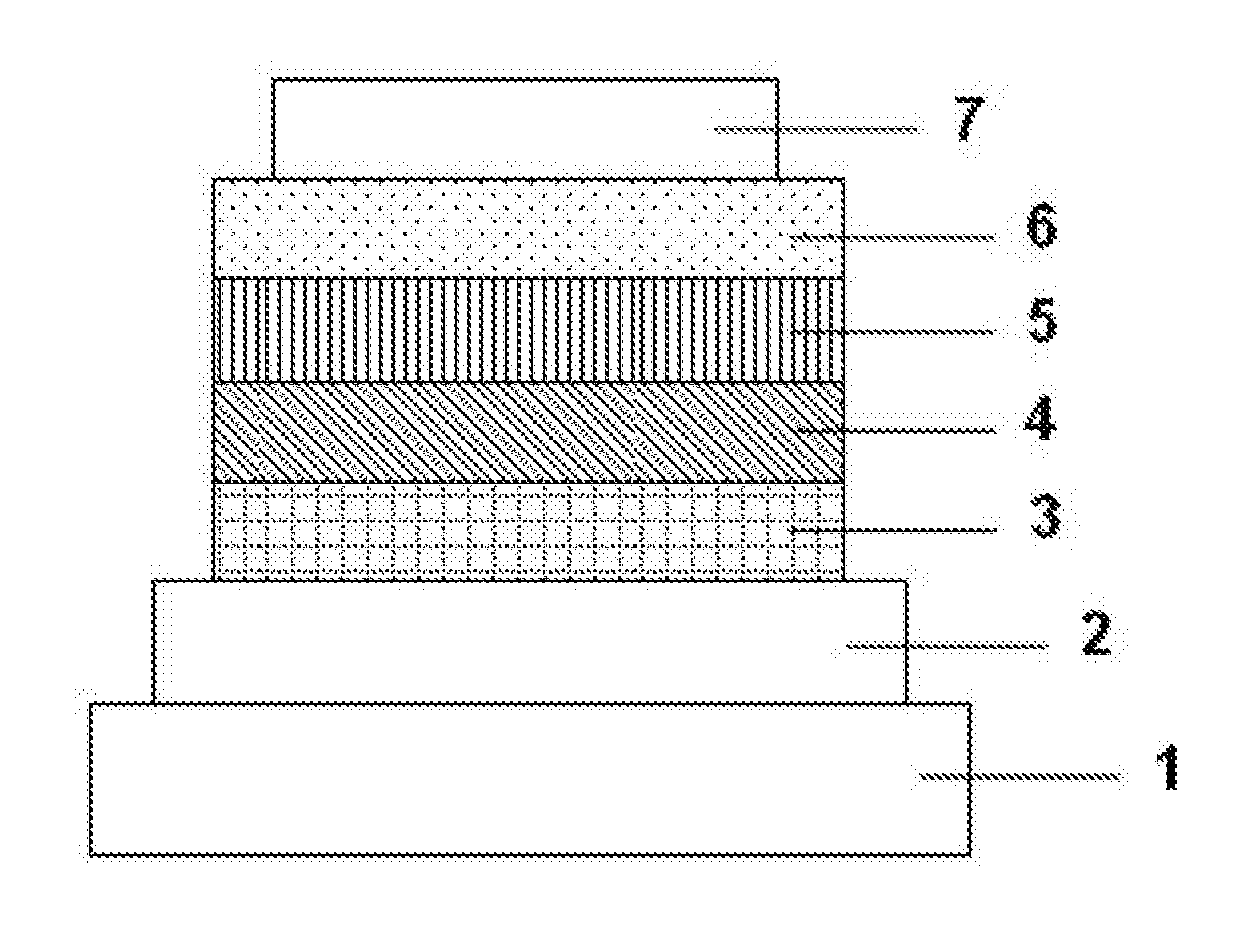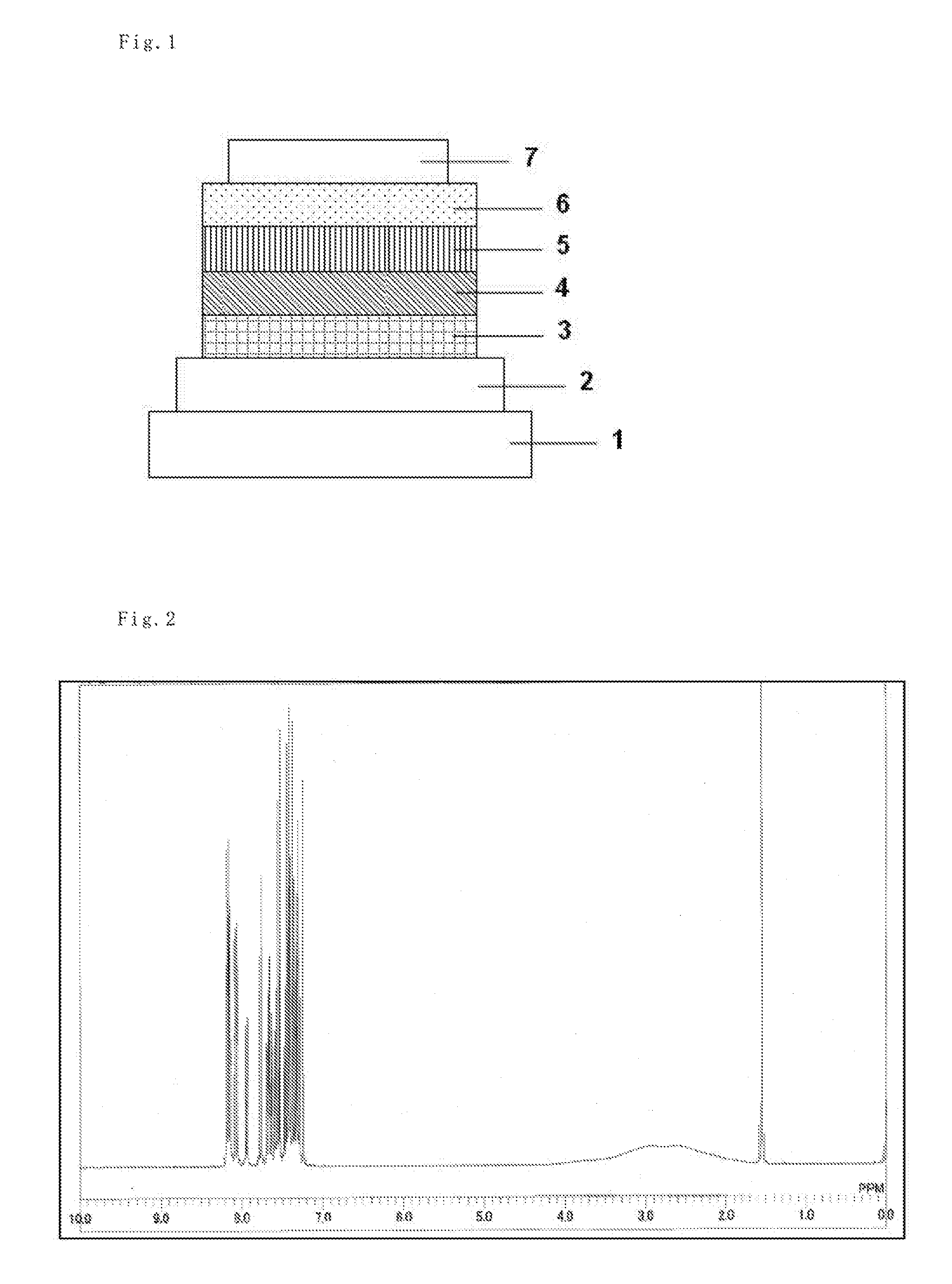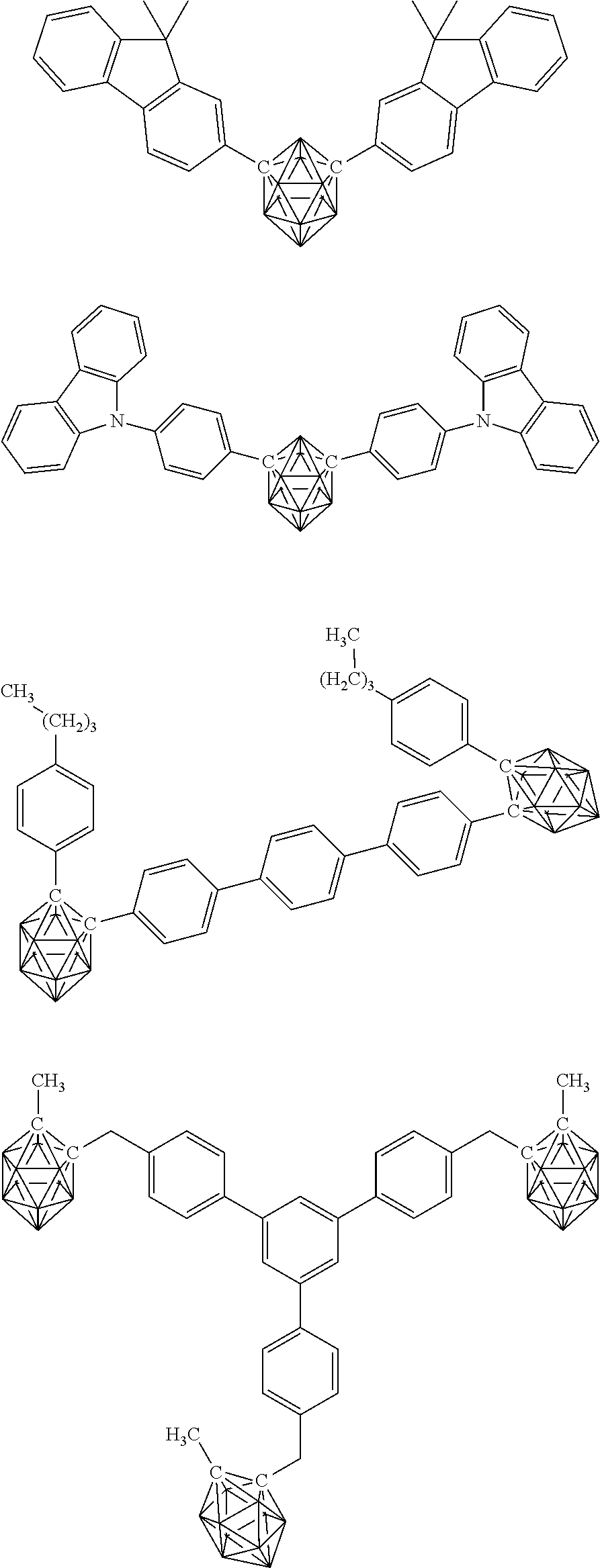Material for organic electroluminescent element and organic electroluminescent element using the same
- Summary
- Abstract
- Description
- Claims
- Application Information
AI Technical Summary
Benefits of technology
Problems solved by technology
Method used
Image
Examples
example 1
[0108]A compound 1 is synthesized in accordance with the following reaction formulae.
[0109]Under a nitrogen atmosphere, 35.0 g (0.243 mol) of m-carborane and 350 mL of 1,2-dimethoxyethane (DME) were added, and the resultant DME solution was cooled to 0° C. 96.8 mL of a 2.69 M solution of n-butyllithium in hexane was dropped to the solution, and the mixture was stirred under ice cooling for 30 minutes. 67 mL of pyridine was added to the resultant and the mixture was stirred at room temperature for 10 minutes. After that, 75.6 g (0.763 mol) of copper(I) chloride was added to the resultant and the mixture was stirred at 65° C. for 30 minutes. After that, 76.4 g (0.260 mol) of 2-iododibenzofuran was added to the resultant and the mixture was stirred at 95° C. overnight. The reaction solution was cooled to room temperature, and then the precipitated crystal was taken by filtration and the solvent was distilled off under reduced pressure. The resultant residue was purified by silica gel c...
example 2
[0113]Each thin film was laminated by a vacuum deposition method at a degree of vacuum of 2.0×10−5 Pa on a glass substrate on which an anode formed of indium tin oxide (ITO) having a thickness of 70 nm had been formed. First, copper phthalocyanine (CuPC) was formed into a layer having a thickness of 30 nm to serve as a hole-injecting layer on the ITO. Next, diphenyl naphthyl diamine (NPD) was formed into a layer having a thickness of 15 nm to serve as a hole-transporting layer. Next, the compound 1 serving as a host material for a light-emitting layer and an iridium complex [iridium(III) bis(4, 6-di-fluorophenyl)-pyridinato-N,C2′]picolinate] (FIrpic) serving as a blue phosphorescent material as a dopant were co-deposited from different deposition sources onto the hole-transporting layer to form a light-emitting layer having a thickness of 30 nm. The concentration of FIrpic was 20%. Next, Alga was formed into a layer having a thickness of 25 nm to serve as an electron-transporting la...
examples 3 to 7
[0115]Organic EL devices were each produced in the same manner as in Example 2 except that the compound 13, 25, 26, 29, or 36 was used instead of the compound 1 as the host material for the light-emitting layer in Example 2.
PUM
 Login to View More
Login to View More Abstract
Description
Claims
Application Information
 Login to View More
Login to View More - R&D
- Intellectual Property
- Life Sciences
- Materials
- Tech Scout
- Unparalleled Data Quality
- Higher Quality Content
- 60% Fewer Hallucinations
Browse by: Latest US Patents, China's latest patents, Technical Efficacy Thesaurus, Application Domain, Technology Topic, Popular Technical Reports.
© 2025 PatSnap. All rights reserved.Legal|Privacy policy|Modern Slavery Act Transparency Statement|Sitemap|About US| Contact US: help@patsnap.com



